October 7, 2022
A Haunting Landscape
Reluctantly, I left my cozy hotel in Martinborough, speeding off down country roads toward the coast. I drove through rolling, lush farmland, dotted with trees and fluffy white sheep. New Zealand’s North Island had reached full-blown spring. The route grew windy (as in winding), as I dropped towards the coast. It also grew windy (as in blustery).
High winds off the Tasman Sea get caught on the southern coast of the North Island. Flying into Wellington, I saw an imitation of the Hollywood Sign, with the final “o” and “n” seemingly getting blown off the hillside. Down here near Lake Ferry, without any sort of harbor to protect the coast, the wind felt even more intense.
I reached an empty trailhead. From the gravel parking lot, I heard the crash of waves on the nearby rocky beach. But mostly I just heard the howl of the wind. It blew rain into my face. It endowed the tall grass and shrubs with endless, restive motion. In short, it felt … creepy.
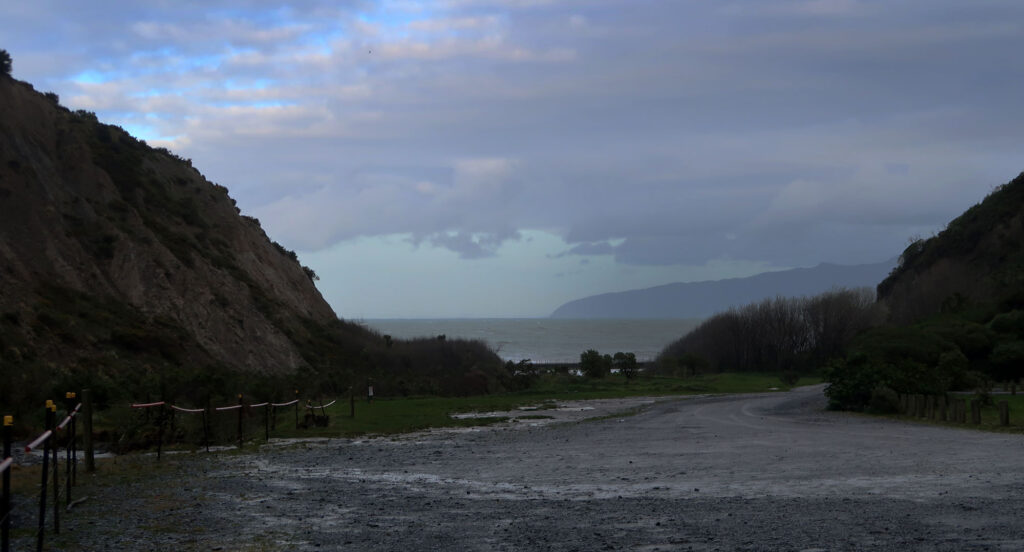
This was just as well. Because Pūtangirua has grown a bit famous for being a kind of creepy place. I’d enjoy uncommonly good weather for most of my excursions in Aotearoa. I relished having one moist, moody tramp. And so I donned my hiking boots, velcroed in my gators, and began marching up the streambed.
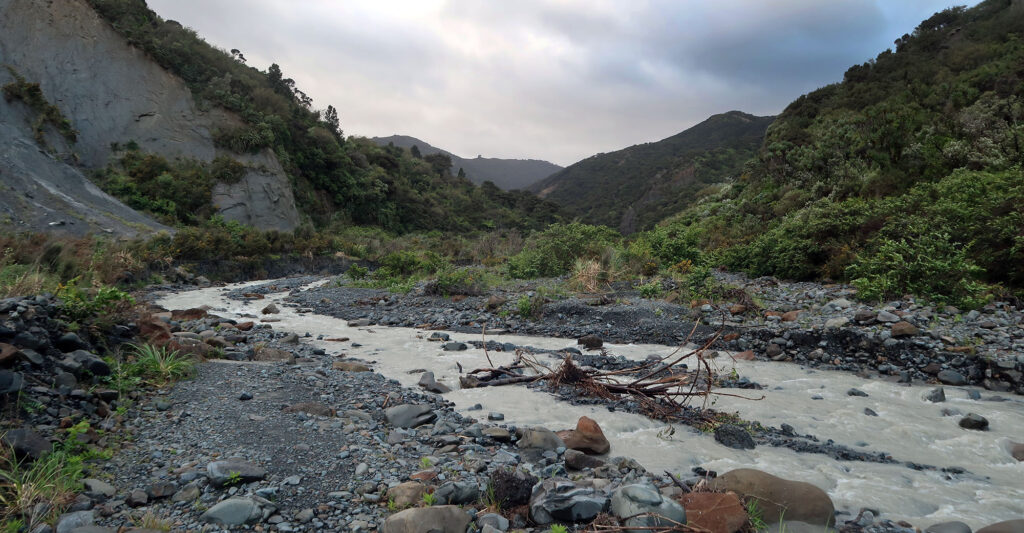
The Paths of the Dead
My adventures in New Zealand would include over a half dozen hikes across the two main islands. But thus far I had yet to prioritize searching out remote filming locations from the Lord of the Rings trilogy. To be sure, I had strolled through a city park in Wellington to visit the “hobbits’ hideaway”. But mostly I had prioritized other adventures.
The Pūtangirua Pinnacles would thus form my first “Peter Jackson” hike. In Return of the King, Aragorn and company wander through its creep pinnacles en route to meeting a ghost king. It’s one of the weaker plot points of both the book and film. But the hike seemed cool. Peter Jackson and Fran Walsh (an LoTR writer) had also chosen Pinnacles for some scenes in their 1992 zombie/slasher/comedy Brain Dead.
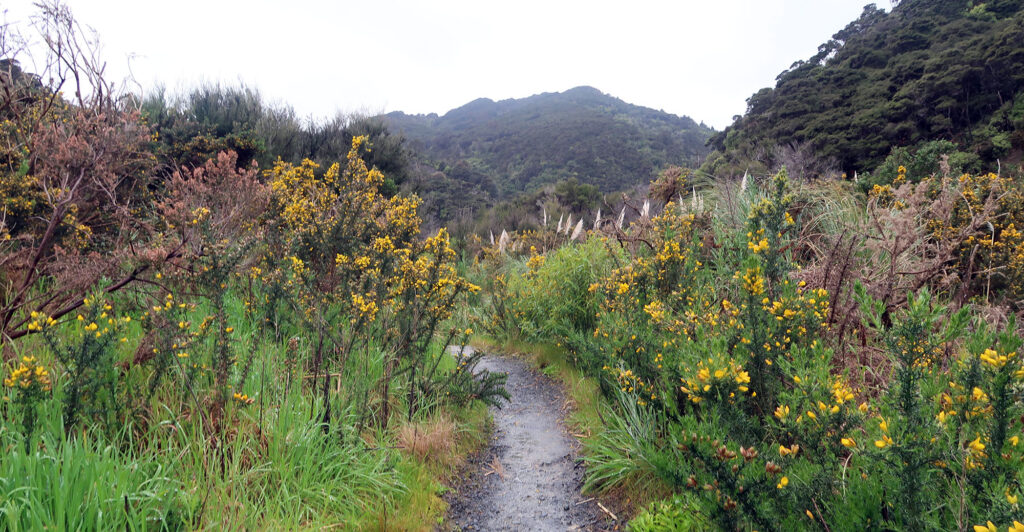
The Path Less Taken
There are multiple routes to view the Pinnacles up close and personal. I would follow a “loop” approach, hugging the streambed on the way out, and coming back through the woods along a high ridgeline.
The streambed proved a bit difficult to follow. A few times I found myself pushing through dense brush. I’d emerge onto some herd path, having transferred gallons of rainwater from leaves to my t-shirt in the process.
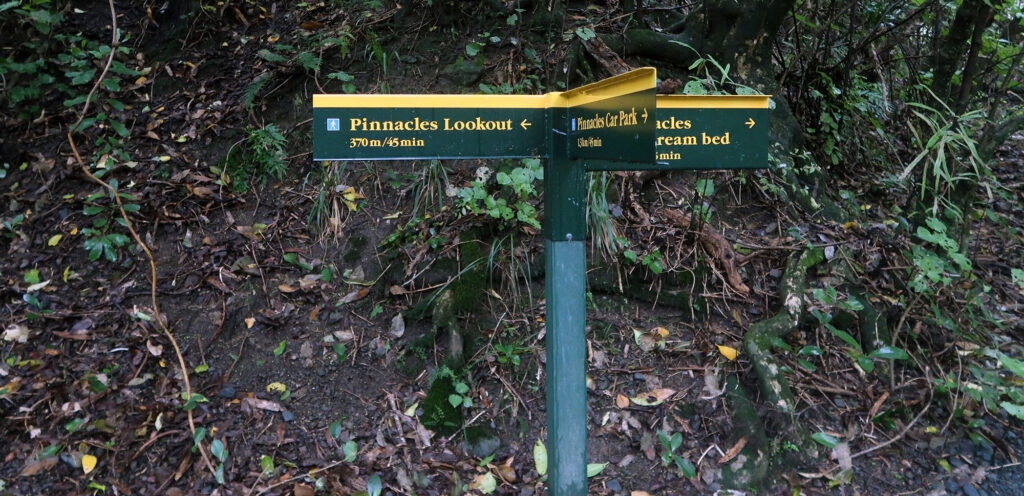
Both the rock formations and muddy streambed consisted of bleached grey, sedimentary rock. It carried hard pebbles and morphed endlessly between sturdy and sludgy. It seemed like some ancient giant had spilled cement all over the landscape. And some of it had never been cured. A few times my foot plunged into the mud. A couple of times I almost slid into the stream.
When I saw Return of the King for the first time, I assumed this landscape was a set. The rocks just didn’t look real. They looked like globs of cement. But here I was witnessing it firsthand. And of course, the famous repeated quote came to mind:
The way is shut. It was made by those who are Dead. And the Dead keep it…
Pūtangirua Pinnacles
I reached the entrance to the ‘canyon’ where the hoodoos began. The path now ramped uphill along a bed of scree. The stream had now reduced to a trickle. And there above me were the pinnacles.

Hoodoos form via erosion as wind and rain whittle down the weaker rock surrounding them. Perhaps the most archetypical examples are found in Utah’s Bryce Canyon, which inspired the rockwork for Disney’s Thunder Mountain Railroad. But these hoodoos looked less ‘John Wayne’ and more ‘zombie apocalypse.’
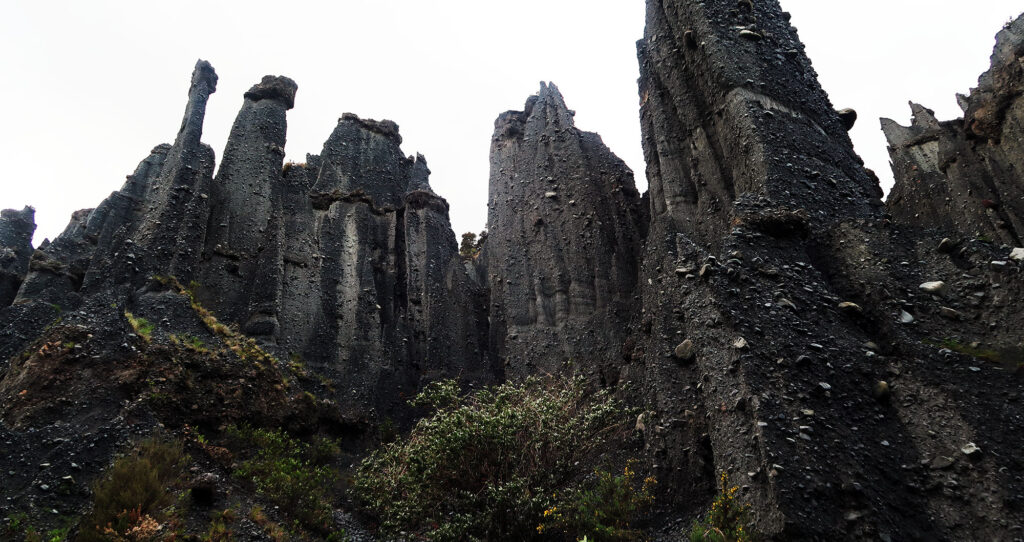
Up and Out of Pūtangirua Pinnacles
I wandered up through the canyon until it began to peter out. Then I reversed course back to the trailhead. The upper route climbed a steep forested hillside to a wooden lookout. Here I got a holistic, if removed, view of the site.

Then it was a gentle downhill trek through native flora back to the lot. Here I passed the only other humans I would see on this excursion. A pair of kiwi hunters passed by. And by “kiwi hunters” I mean hunters who seemed local. Hunting kiwi birds is a big no-no. Soaking wet and clad in camo, they said simply “nice day for it!” Agreed.
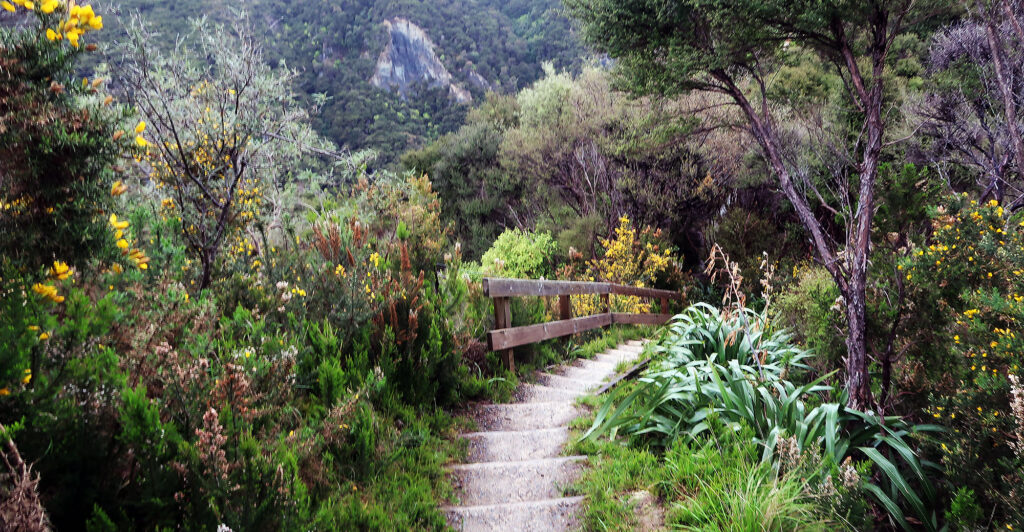
The trail back to the parking lot seemed in vastly better shape than the streambed. Steep pitches sported well-built stairways. I soaked in the lush ferns and low-slung trees. British settlers tried their darnedest to terraform New Zealand into a civilized landscape. This had dire consequences for local species. But spots like this remained seemingly wild and untouched.
Soon enough I was back in my dry vehicle, sheltered from the wind. I’d drive a few hours north that day, into sunny weather. I’d lay out my gear in the sun and take a nice warm shower. A cozy ending to a chilly and chilling adventure.

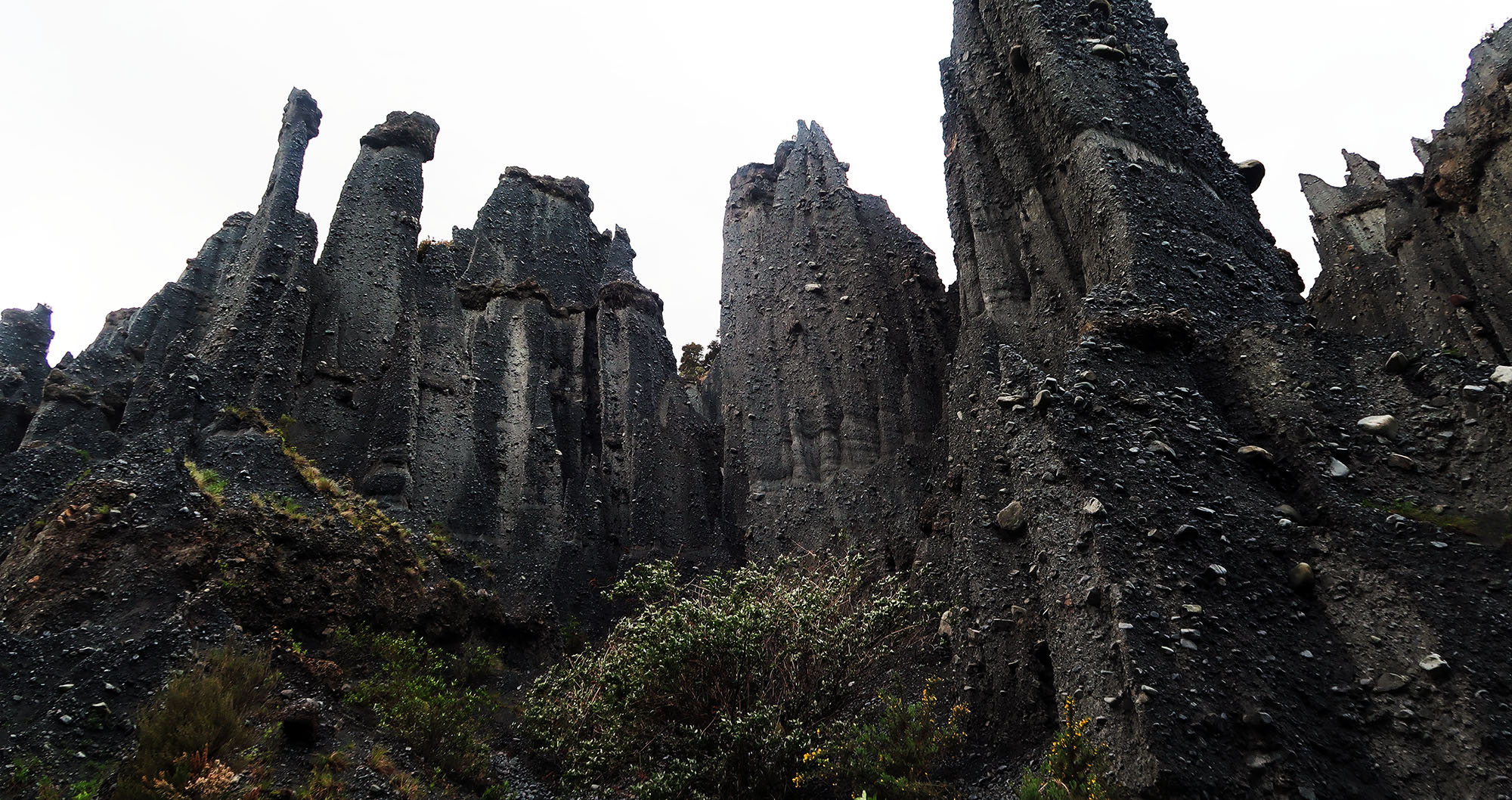
Thank you for sharing. Beautifully written, with exquisite photos of a landscape I will never get to see!
I never knew this was a real place! That looks so incredible!!